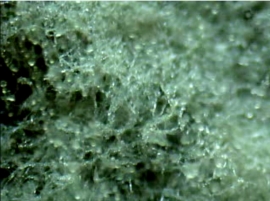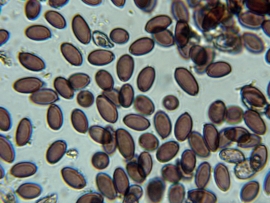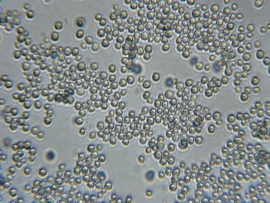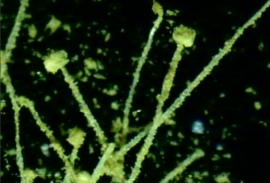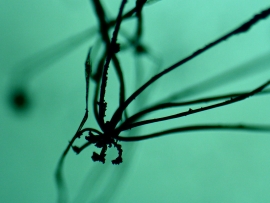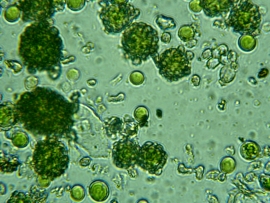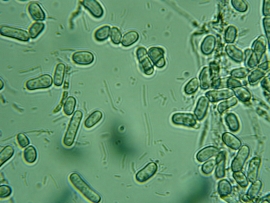Mold on a nectarine
downloadThe white fuzz which appears on fruits, in this case on a nectarine, when these start to decompose, is actually a network of multicellular filaments which are called hyphae. A network of hyphae makes up a mycelium - the vegetative part of a mold. The hyphae which contain sporangia are called sporangiophores. The sporangia are visible with the naked eye and resemble pinheads. They contain spores which are released in the environment the moment the wall of the sporangium breaks, thus taking place the asexual reproduction of the mold. Like all types of fungi, the mold obtains energy, not through photosyntesis, but by using the organic matter on which it lives. Therefore, molds play an important role in the decomposition and recycling of the nutrients from nature.
